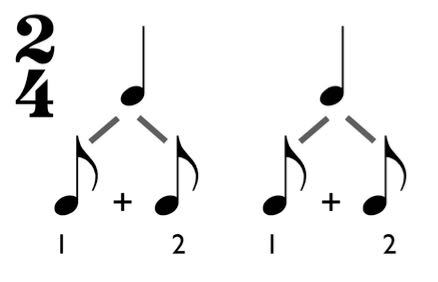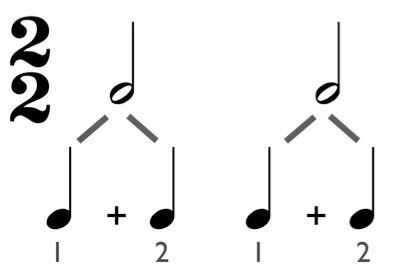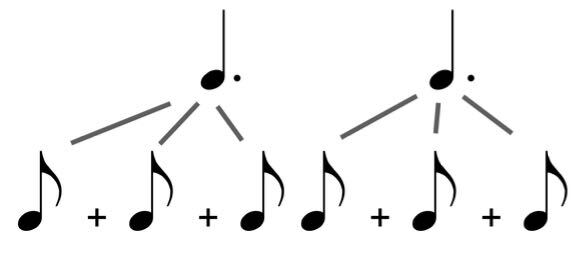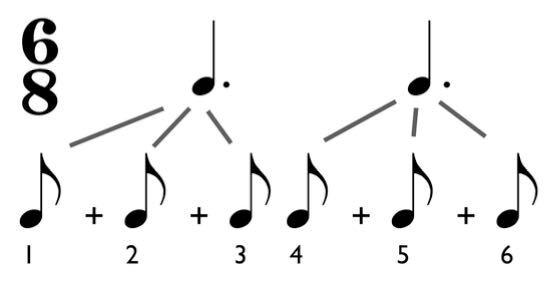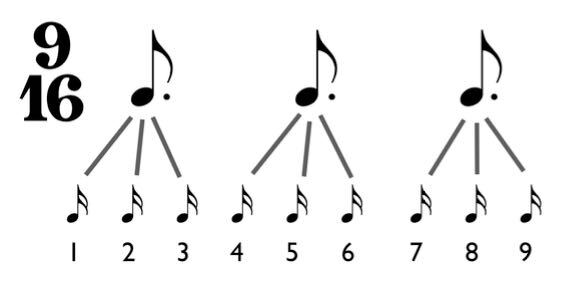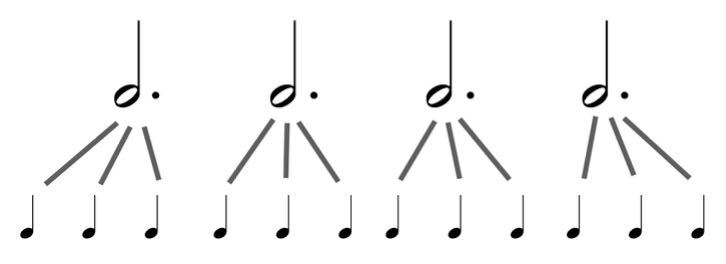Day 9: Simple vs. Compound Meter
As we learned about meters and time signatures throughout this book, we described them as duple (2 beats per measure), triple (3 beats per measure), or quadruple (4 beats per measure).
But apart from duple, triple, or quadruple, time signatures are also categorized as either simple
or compound
. This distinction is important because of the musical qualities inherent in these types of meter.
Simple time signatures are those that we’ve covered so far. What makes them simple
is that each beat of the meter is naturally divisible by 2,
whereas we’ll see that compound meters are naturally divisible by 3. For example, two-four is a simple meter because every quarter note beat is naturally divisible by 2:
Two-four: A simple duple time signature
The time signature can be categorized as a simple duple meter
.
Another simple duple meter is two-two. It is duple because it’s made up of 2 beats per measure and it is simple because each of those beats is naturally divisible by 2.
Compound Meter
For every simple meter, there is a compound meter counterpart. While simple meters are those whose beats are naturally divisible by 2, every beat in a compound meter is naturally divisible by 3.
Here’s how this works: the simple duple meter two-four is made up of 2 quarter note pulses per measure and each of those is naturally divisible into two eighth notes. But if the meter was made up of 2 dotted quarter notes instead, each of these 2 pulses are now naturally divisible into 3
equal parts:
Every dotted quarter note is equal to three eighth notes
In fact, the time signature for a meter made up of 2 dotted quarter notes is six-eight–6 eighth note beats per measure.
Six-eight time: A compound duple time signature
Keep in mind, however, that the main beats are still the two dotted quarter notes. To distinguish between these main beats and their divisions, we can use the words pulse
and subdivisions
.
And as usual, the first of these two pulses is strong and the second is weak.
Let’s look at another example. This is a simple triple meter made up of 3 eighth notes per measure.
Its compound triple counterpart must consist of 3 dotted eighth notes per measure
and each of the 3 dotted eighth notes are themselves divisible by 3.
Adding those divisions up (the sixteenth notes) we learn that the time signature of this meter is nine-sixteen. Since the pulse is in 3, this time signature is compound triple.
The time signature nine-sixteenths
Finally, let’s look at an example of a compound quadruple meter. This measure is filled with 4 dotted half notes. What is the time signature?
Four dotted half notes in a bar: What is the time signature?
Let’s get to the answer step-by-step. Every dotted half note can be broken down into 3 quarter notes:
Every dotted half note is equal to three quarter notes
The measure is now filled with 12 quarter notes. The top number of the time signature will therefore be 12. The bottom number must represent the quarter note subdivision and from our experience with simple meters we know that this is 4.
So, the time signature of this compound quadruple meter is twelve-four
. The pulse is in 4 and each one is divisible into 3 quarter notes:
The time signature twelve-four: A compound quadruple meter
